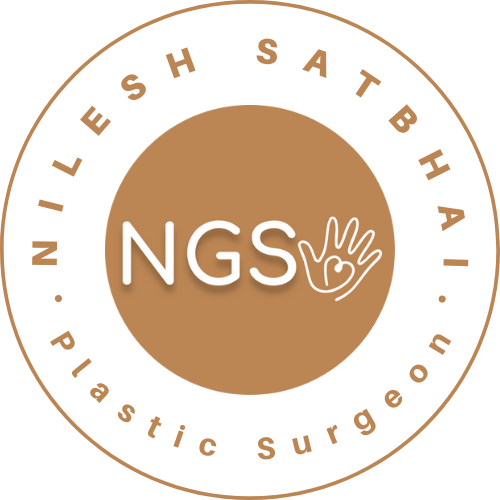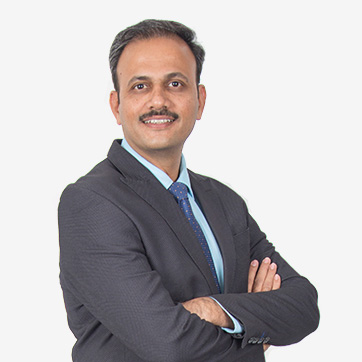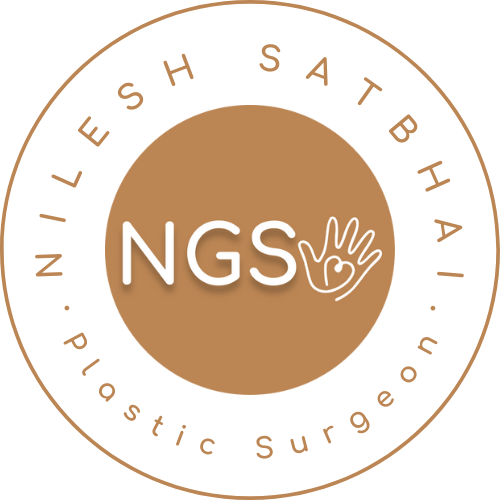Enhancing Outcomes, Restoring Lives: The Significance of Plastic Surgeons in Wound Healing
Whether you’re recovering from surgery, managing a chronic wound, or simply interested in understanding the fascinating process of healing, this blog aims to empower you with knowledge and insights into the world of wound healing.
Wound healing is a natural and intricate process that your body initiates to repair damaged tissues. It is a journey that requires time, patience, and the right care to ensure optimal healing outcomes. By gaining a deeper understanding of how wounds heal, you can actively participate in your own recovery and take proactive steps to support the healing process.
In this blog, we will explore the various aspects of wound healing, unravel the stages involved, and discuss the essential role of Plastic & Reconstructive Surgeons in guiding and facilitating your healing journey.
Understanding Wound Healing
Wounds come in various forms, from minor cuts and scrapes to surgical incisions and chronic ulcers. Understanding the process of wound healing is essential in comprehending the steps your body takes to repair and restore damaged tissues.
Types Of Wounds
Broadly speaking, wounds can be classified into two types: acute and chronic.
Acute wounds are those that occur suddenly and typically heal within a few weeks. These types of wounds usually result from cuts, scrapes, burns, or wounds following accidents and trauma. Acute wounds require immediate medical attention and should be treated promptly to reduce the risk of infection and other complications.
Chronic wounds, on the other hand, are slow-healing wounds that may take weeks or even months to heal completely. The delay in healing of these wounds could be either due to multiple co-morbid conditions such as diabetes, poor circulation, immune system deficiencies, vascular disease, or persistent pressure. Common examples of chronic wounds include pressure ulcers (bed sores), diabetic foot ulcers, and venous leg ulcers. Sometimes simple wounds become chronic because of improper treatment or due to unavailability of treatment.
Recognizing the type of wound you have can help you understand the healing process and the specific care required.
Phases of Wound Healing:
Wound healing is a dynamic process that involves three distinct but overlapping phases:
Inflammation:
The initial phase of wound healing, inflammation, serves as the body’s natural response to injury. Blood vessels constrict to control bleeding, and immune cells, known as white blood cells, migrate to the wound site to fight off potential infections. Inflammation is characterized by redness, swelling, warmth, and pain. This phase sets the foundation for subsequent stages of healing.
Proliferation:
During the proliferation phase, new tissue begins to form. Specialized cells called fibroblasts generate collagen, a key protein that provides structural support and strength to the healing wound. New blood vessels develop to supply oxygen and nutrients, while epithelial cells migrate to cover the wound surface. This phase is crucial for the restoration of tissue integrity.
Remodeling:
The final phase of wound healing, remodeling, involves the reorganization and strengthening of the newly formed tissue. Collagen fibers become more organized and mature, improving the wound’s tensile strength. Excess collagen is broken down and removed, resulting in a smaller, less visible scar. This phase can continue for months or even years, gradually refining the healed tissue.
Significance of Each Phase:
Each phase of wound healing plays a vital role in the overall healing process. Inflammation clears the wound of debris and potential pathogens, while proliferation establishes the foundation for tissue regeneration. Remodeling ensures the wound site becomes stronger and more functional over time. It’s important to note that disruptions or delays in any of these phases can affect the healing outcome, emphasizing the importance of proper wound care and management.
Understanding the intricacies of wound healing allows you to appreciate the remarkable regenerative capabilities of your body. By recognizing the stages involved and the factors that influence healing, you can actively participate in your recovery process and make informed decisions about your wound care. In the next sections, we will explore the factors that can impact wound healing and the specialized role of Plastic & Reconstructive Surgeons in guiding and optimizing the healing journey.
Standard Methods of Wound Healing
Standard methods of wound healing involve a combination of basic wound care principles and supportive measures to facilitate the natural healing process. Here are the key components of standard wound healing methods:
1. Cleaning and Debridement:
Thoroughly cleaning the wound is crucial to prevent infection and promote healing. The wound should be gently rinsed with sterile saline solution or mild soap and water. Any debris, foreign objects, or dead tissue should be removed through a process called debridement. Debridement can be achieved through various methods, such as mechanical debridement (using a gentle irrigation or wet-to-dry dressings), enzymatic debridement (application of specific enzymes to dissolve dead tissue), or surgical debridement (surgical removal of dead or contaminated tissue).
2. Dressings and Wound Bed Protection:
Appropriate dressings are applied to protect the wound from contamination, facilitate a moist healing environment, and promote optimal healing conditions. The choice of dressing depends on factors such as wound type, severity, and exudate levels.
3. Infection Prevention:
Preventing infection is critical for successful wound healing. This involves maintaining proper hygiene, washing hands before and after dressing changes, using sterile techniques, and applying appropriate antimicrobial agents when necessary. Monitoring for signs of infection, such as increased pain, redness, swelling, warmth, or pus, and promptly seeking medical attention if infection is suspected, is vital.
It’s important to note that the standard methods of wound healing may vary depending on the specific characteristics of the wound and the individual patient’s needs. Healthcare professionals, including Plastic & Reconstructive Surgeons, play a crucial role in assessing wounds, determining appropriate treatment plans, and guiding patients through the healing process.
In some cases, traditional wound healing methods may not be sufficient and advanced medical interventions such as medicine, surgical intervention, or laser therapy may be necessary to achieve optimal results.
Role of Medicine in Wound Healing
Medications can be used to support wound healing and manage specific conditions that may impede the healing process. Here are a few examples:
Antibiotics: In the case of infected wounds, antibiotics may be prescribed to combat bacterial infections. They help eliminate harmful bacteria and prevent the infection from spreading, allowing the wound to heal.
Topical Medications: Various topical medications, such as antimicrobial creams, ointments, or gels, may be applied directly to the wound to prevent or treat infections, reduce inflammation, and promote healing.
Pain Management: Medications, including nonsteroidal anti-inflammatory drugs (NSAIDs) or analgesics, may be used to manage pain associated with the wound, improving patient comfort and promoting mobility.
Chronic Disease Management: Individuals with chronic conditions, such as diabetes, peripheral artery disease, or immunodeficiency disorders, may require medication management during wound healing. Medications are used to control these conditions and optimize overall health, as uncontrolled chronic diseases can compromise the healing process. Effective management of chronic diseases contributes to improved blood flow, enhanced immune response, and better healing outcomes.
Role of Surgical Intervention in Wound Healing
In some cases, wounds may require surgical intervention to facilitate healing, especially when conservative measures prove insufficient. Timely surgical intervention can be a game changer. Plastic & Reconstructive Surgeons are skilled in performing a variety of surgical procedures to address complex wounds. Here are a few examples of surgical interventions for wound management:
Debridement:
Wound debridement is the most crucial step which directs the wound healing in the right direction. Surgical debridement involves the removal of dead or contaminated tissue from the wound. This helps promote a clean wound bed and facilitates the growth of healthy tissue.
Microvascular Surgery and Reconstruction:
Microvascular surgery and reconstruction techniques have revolutionized the treatment of severe wounds, saving multiple limbs that would otherwise have required amputation.
Skin Grafting:
Skin grafting involves the transplantation of healthy skin from one area of the body (donor site) to the wound site. It aids in covering large or non-healing wounds, promoting wound closure, and improved function.
Tissue Flaps:
Tissue flaps are used when larger tissue defects need reconstruction. A section of skin, along with underlying fat, blood vessels, and sometimes muscle, is transferred from a healthy area to the wound site, ensuring adequate blood supply and tissue viability.
Surgical interventions are tailored to the specific characteristics and needs of each patient, with the goal of optimizing wound healing, restoring form and function, and achieving the best possible outcome. Surgery often helps in reducing the overall duration of wound healing and in turn, makes the treatment cost effective.
Role of Laser Therapy in Wound Healing
Laser therapy, particularly utilizing the RecoSMA laser technology, plays a significant role in wound healing and offers various benefits in medical and cosmetic applications.
1. Faster Wound Healing:
The RecoSMA laser technology is a unique laser system that has demonstrated its efficacy in promoting faster wound healing. Delivering targeted laser energy to the wound site stimulates cellular activity, accelerates tissue regeneration, and enhances the natural healing process. This can lead to shorter healing times and improved overall outcomes for patients.
2. Infection Control and Reduced Treatment Duration:
Laser therapy, including RecoSMA, can effectively contribute to infection control in wound management. The laser’s energy can help kill bacteria and other pathogens present in the wound, reducing the risk of infection and facilitating a more rapid healing process. By promoting a cleaner wound environment, laser therapy may also help minimize the duration of treatment required.
3. Improved Scar Formation and Cosmetic Applications:
RecoSMA Laser therapy has been recognized for its ability to erase scars. By precisely targeting scar tissue, laser energy can promote remodeling and collagen production, leading to smoother, less noticeable scars. This can be particularly beneficial for patients seeking aesthetic improvements after surgical procedures, injuries, or burns. Additionally, laser therapy has multiple cosmetic indications, including the treatment of pigmentation disorders, vascular lesions, and skin rejuvenation.
4. Treatment of Rare Skin Conditions:
In addition to wound healing and cosmetic applications, laser therapy has shown effectiveness in managing certain rare skin conditions. The RecoSMA laser technology, in particular, has been found to be beneficial in treating conditions such as psoriasis, lichen planus, eczema, dermatitis, and alopecia areata. By targeting specific cellular processes and modulating the immune response, laser therapy can help alleviate symptoms and improve the quality of life for patients with these conditions.
Role of Advanced Technologies
The field of wound healing has witnessed significant advancements in recent years, thanks to the integration of advanced technologies. These cutting-edge innovations have revolutionized the way wounds are diagnosed, treated, and managed, leading to improved outcomes for patients. From innovative dressing materials and negative pressure wound therapy to sophisticated orthotic devices, advanced technologies have played a crucial role in enhancing patient care, optimizing healing processes, and minimizing discomfort.
Newer dressing materials have brought about significant improvements in wound care, making them more patient-friendly and enhancing compliance with treatment protocols. These advanced dressings offer a range of benefits, such as improved moisture management, enhanced protection against infection, and better wound bed preparation. Additionally, they can be easily applied, provide comfort, and require fewer dressing changes, reducing the overall burden on patients.
One notable advancement in wound care is the introduction of negative pressure wound therapy (NPWT), which has proven to be a boon for many patients. NPWT involves the application of a vacuum dressing over the wound, creating negative pressure that helps promote wound healing. This technique offers several advantages, including reduced pain and discomfort associated with frequent dressing changes. By maintaining a constant environment conducive to healing and removing excess fluid, NPWT can expedite the healing process, reduce the risk of infection, and minimize wound-related morbidity.
Furthermore, advances in orthotics have played a crucial role in supporting patients during the wound healing process. Orthotic devices, such as braces, splints, and customized supports, provide stability, protection, and proper alignment to injured or healing body parts. These devices offer a variety of options tailored to individual patient needs, ensuring optimal support and facilitating mobility. By providing the necessary assistance and protection, orthotics aid in the healing process and enhance patients’ overall comfort and functionality.
Plastic surgeons deal with a vast majority of problems and conditions from head to toe. They are often called upon by other surgeons to deal with wound problems, such as infections, delayed wound healing, or dehiscence (opening up) of wounds. In addition, there are several complex wounds, which need the expertise of a plastic surgeon for healing.
If you or a loved one is dealing with a wound or facing challenges in the healing process, it is essential to seek professional medical advice and support. Consulting a plastic & reconstructive surgeon will ensure that you receive specialized care tailored to your specific needs. They can assess your condition, recommend the most appropriate treatment plan, and provide ongoing guidance throughout the healing journey.
Remember, each wound is unique, and the path to healing can vary from person to person. Seeking professional medical advice will help you understand the underlying factors contributing to your wound and enable you to make informed decisions about your treatment options. Additionally, the expertise of plastic & reconstructive surgeons, combined with their collaborative approach with other healthcare professionals, will ensure a comprehensive and holistic approach to your wound healing.
Don’t hesitate to reach out to Dr. Nilesh Satbhai to discuss your specific wound healing needs. His expertise, combined with a personalized treatment plan, will give you the best chance for successful healing and a positive outcome. Take the first step towards healing by seeking the professional medical advice and support you deserve.






